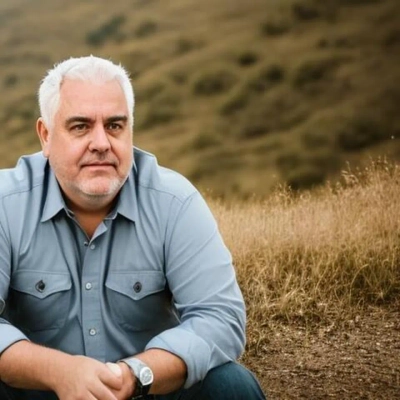Staying Resilient as a CTO: 7 Tips for Maintaining Motivation
Leading CTOs share practical strategies for maintaining motivation through leadership challenges in this comprehensive guide. The article presents seven actionable approaches to transform setbacks into innovation while preserving work-life balance. Industry experts offer tested methods for staying connected to your core mission while building meaningful feedback mechanisms that drive sustained success.
Transform Challenges into Growth Opportunities
Staying resilient as a leader in a fast-paced, constantly evolving environment comes down to focus and perspective. Challenges are inevitable, but viewing them as opportunities to learn and grow shifts the mindset from pressure to possibility. Motivation often comes from seeing the tangible impact of empowering teams—when individuals gain skills that transform their work and confidence, it reinforces the purpose behind every decision. Consistently prioritizing curiosity, continuous learning, and celebrating small wins keeps energy levels high, even when the stakes are intense. Maintaining balance and reflecting on long-term goals helps navigate short-term hurdles with clarity and optimism.
Measure Wins Through Impact Not Perfection
I stay resilient by focusing on progress, not perfection. In tech, there's always more to do, but I measure wins in terms of solved problems and lessons learned. What keeps me motivated is seeing how the tools we build make life easier for teams and customers. That sense of impact turns pressure into purpose and keeps me moving forward.
Reframe Setbacks as Catalysts for Innovation
The role of a Chief Technology Officer (CTO) is both exhilarating and relentless. From leading innovation to managing teams, balancing stakeholder expectations, and staying ahead of technological shifts, the pressure can be immense. Resilience isn't optional—it's the foundation that allows a CTO to navigate challenges while maintaining a vision for the future.
Staying resilient as a CTO requires more than technical expertise. It involves cultivating mental agility, building support systems, and reframing challenges as opportunities. A positive outlook isn't about ignoring difficulties but about choosing to focus on growth, learning, and long-term impact. The ability to lead under pressure is strengthened by habits like continuous learning, mindfulness, and surrounding oneself with trusted collaborators who provide perspective.
When I first stepped into a leadership role in tech, one of our major platform overhauls failed during launch week—an experience that could have easily eroded morale. Instead of framing it as a disaster, I positioned it as a learning milestone for the team. We held open post-mortems, identified where processes broke down, and implemented new safeguards. That reframing not only strengthened the system but also built trust: the team realized mistakes weren't career-ending but stepping stones to innovation. Personally, it taught me to treat setbacks as catalysts for resilience.
A Deloitte survey on tech leaders revealed that 73% of CTOs see resilience as the most critical leadership quality in fast-evolving industries. Similarly, research from the American Psychological Association shows that individuals who actively practice optimism and reframe stress as challenge—not threat—report higher job satisfaction and better overall performance. This evidence suggests that mindset, more than circumstance, shapes a CTO's ability to stay motivated under constant pressure.
What keeps me motivated is the knowledge that every challenge is also an opportunity to grow stronger as a leader and more innovative as an organization. Resilience, built through perspective, learning, and support, ensures that even in high-pressure environments, positivity can thrive. For CTOs, the lesson is clear: the best way to stay ahead in technology isn't just adapting systems—it's adapting yourself.
Create Space to Be More Than Work
I don't have a "CTO" role. My biggest challenges are real-world ones, like a bad day on a roof or a tough client. My approach to staying resilient and maintaining a positive outlook is simple: I have a place where I can completely get away from the work and just be a person.
When I get home after a long day, my family doesn't ask me about the business. My kids just want to play. My wife just wants to talk about her day. This simple act of being a person, not a business owner, is what builds my resilience. It allows me to recharge and to come back to work with a clear mind. It's a way of protecting my family from the stress of my business, and it's a way of protecting me from burning out.
The outcome of that is huge. I'm not a person who is always stressed out. I'm a person who is able to solve a problem with a clear mind. The "positive outlook" is a direct result of being a person who is committed to a simple, hands-on solution. The most important thing is that I'm not just a roofer. I'm a father and a husband.
My advice to any business owner is to stop looking for a corporate "solution" to your problems. The best way to "stay resilient" is to have a place where you can be a person. The best way to "stay motivated" is to have a family who supports you. The most valuable thing you can do for your business is to be a person who is a good person.
Let Core Mission Anchor Through Tough Times
"Dont take a job you cant get excited about"... That advice is pretty much the whole game, because that initial excitement is the wellspring for all your resilience later on. It's not about the surface-level cool factor of a product; it's about having a gut-level belief in the company's mission. That purpose becomes your anchor when things inevitably go sideways. When you're dealing with a system outage at 3 AM or a project that's completely off the rails, the only thing that keeps you going is the knowledge that you're fighting for something that matters. Without that core conviction, the constant pressure is just a grind that will absolutely burn you out.

Tackle Complex Problems While Remembering Your Why
I stay resilient by keeping the end goal front and center: we're building fair, easy access to credit for people traditional banks overlook. When pressure spikes, I front-load the riskiest, most complex work whether its technical or people, so ambiguity shrinks early. At Earnifi, an eleventh-hour surprise meant we needed a ledger; I took the critical path and shipped an MVP that mirrored the vendor's APIs so the team could keep moving. That discipline pairs with a positive outlook: I remind myself why I took this job, and I revisit impact stories - hundreds of customers avoiding fees, or the one shy engineer who grew into a leader after coaching. That mix of mission, people, and craft is what motivates me: build what matters, grow others, tackle the hard problems first-and let the noise fall away.
Build Tight Feedback Loops With Clear Purpose
In AI, the ground moves under your feet daily. As an ML lead focused on developer experience and DevRel, I stay resilient by treating that volatility as signal, not noise. My week runs on tight loops: talk to builders, read telemetry, rerun evals, ship a small improvement, fix the docs or SDK, repeat. I keep a one-sentence mission and a tiny Must-Win list; everything else is a two-way-door decision we can reverse. We do blameless reviews when things break, set safe defaults, and write decisions down so context, not heroics, carries the team. I guard a daily maker block, lift, sleep, and delegate like it's my real job.
What keeps me optimistic is watching time-to-first-token drop for developers and seeing users unlock capability they didn't think was possible last month. The community's questions sharpen our roadmap; mentoring engineers and turning feedback into product is endlessly energizing. In a field that changes by the week, purpose, people, and steady habits make optimism the rational choice.






